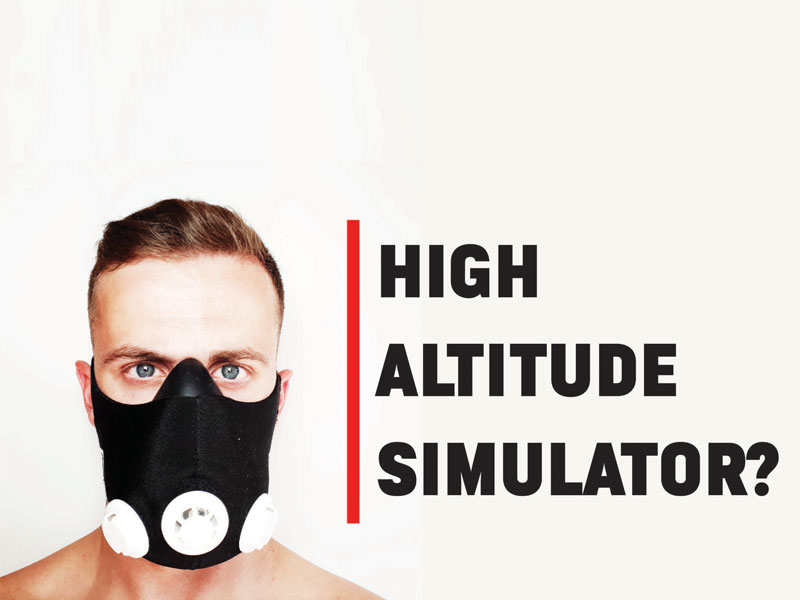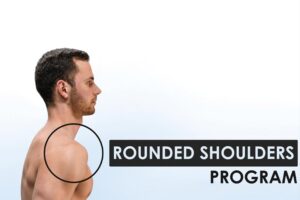
Do Elevation Training Masks Actually Simulate High Altitude?
When Elevation Training Masks first came out, they were marketed as a training tool to simulate high altitude training. Why would you want to simulate high altitude training in the first place? Well, it’s been scientifically proven by many studies that training at higher altitudes forces the body to adapt physiologically to the change in environment, thereby increasing performance when athletes return to sea level. But, can these masks actually simulate high altitude? The quick answer is no. In order to unpack that answer, first we need to understand exactly what’s happening when we breathe at high altitude.
What is different at high altitude?
At high altitudes, both the atmospheric pressure and the partial pressure of oxygen (the amount of pressure from the oxygen in the air mixture) are reduced. This causes us to feel like we’re breathing “thinner air.” In reality, we are breathing “weaker air.” Because there is less atmospheric pressure at high altitudes, the oxygen molecules are more spread out making it more difficult for them to enter our bloodstream once in our lungs. This decrease in pressure results in a reduction in our blood oxygen levels which means less oxygen being transported to and utilized by our working muscles. Less oxygen means less aerobic capacity and less aerobic capacity means faster fatigue. The body responds to this decrease in oxygen levels by making physiological adaptations- it increases hemoglobin concentration in the blood (the “vehicles” that take the oxygen from the lungs to where it is needed), capillary density (more “paths” for the “vehicles”), mitochondrial volume (the “energy generators” in our tissues), and buffering capacity (the ability to resist changes in pH) in an attempt to increase the oxygen that’s being transported to our muscles as well as the muscle’s ability to use the oxygen. Eventually, these adaptations will give the athlete performance advantages when they return to sea level. As you can imagine, this whole process takes weeks or even months of living and training at high altitudes and any adaptations will start to fade as soon as the athlete returns to sea level.
So, is an Elevation Training Mask really the same as a High Altitude Environment?
The important difference between the air at high altitude and the air at sea level is the reduced partial pressure of oxygen. At high altitudes, our body’s physical adaptations to make up for the lack of oxygen (breathing deeper/faster) are ineffective because of the lack of pressure/available oxygen molecules. What is needed is a more efficient supply chain- a physiological adaptation. Elevation Training Masks can’t change the partial pressure of incoming air, they can only reduce the total amount of airflow to the lungs. The effect is the equivalent of trying to work out while breathing through a straw- it will definitely be more difficult to breathe, but the oxygen in each breath isn’t any less available. Therefore, physical adaptations are sufficient (breathing deeper/faster), and the body makes no additional attempts to alter the physiological process. It is the physiological adaptations that athletes are looking for in order to improve their performance results.
Because we know a change in pressure is what is really required to create the physiological adaptations needed to enhance performance, and Elevation Training Masks do not promote any kind of change in pressure, very few studies have been done on their effectiveness. The only study that measured altitude related adaptations with an Elevation Training Mask concluded that wearing an ETM does not appear to act as an simulator of altitude in any way. (This study tracked participants in a 6-week high-intensity cycle ergometer training program.) There is no additional scientific evidence to support the claim that they do anything physiologically to imitate high altitude training.
Then what do Elevation Training Masks actually do?
Even though Elevation Training Masks do not accurately simulate a high altitude training environment, they can be used when engaging in restricted air training- also known as respiratory muscle training. This form of training involves strengthening the respiration muscles. We’ll go into more detail about the effectiveness of this form of training and whether or not ETMs are helpful in this capacity in our next post. Read on to find out more!
A quick note on simulated altitude…
If you’re serious about reaping the performance benefits of altitude training, you’re going to need a lot more than a simple mask. What you need is to live in or accurately simulate a high altitude environment. The obvious option is to move to a high altitude location for your training, but this is not always practical or feasible. Alternatively, if you want to accurately simulate high altitudes in the comfort of your home or gym, you’ll need to invest in a whole different area of sports performance products. Altitude masks and altitude tents are state of the art systems that simulate high altitude through generators that provide a hypoxic gas mixture that more closely mimics the partial pressure of oxygen at altitude. These devices can accurately simulate altitudes from 0 to 21,000 feet and, as you can guess, come at a much higher price point than Elevation Training Masks. So, if you feel that simulated altitude is the next step for your training and you can’t move to the mountains, this is where you should be looking.



